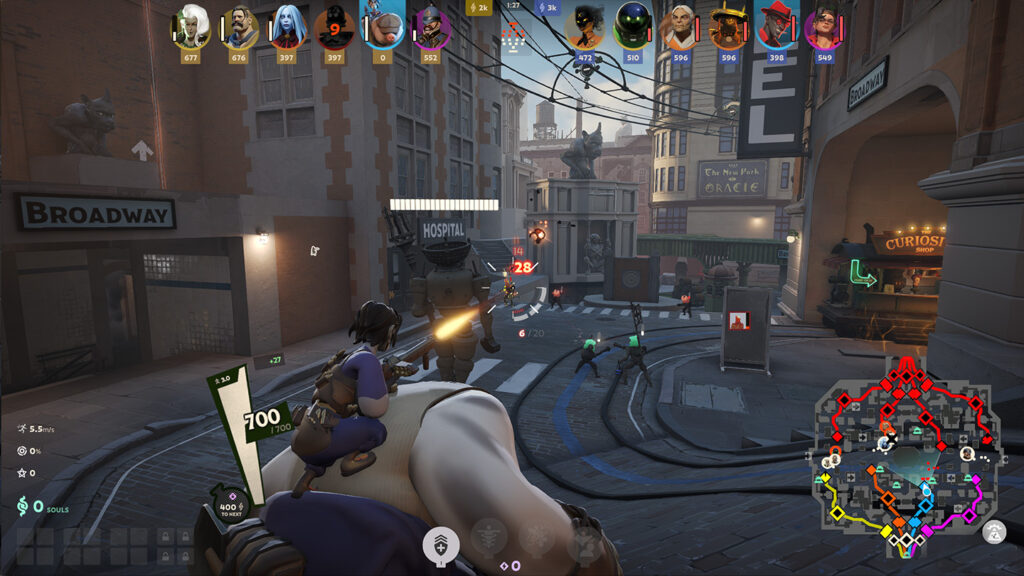Valve, the developer known for iconic games like Counter-Strike and Dota 2, is back with a new title: Deadlock. This game, still in early development, merges the fast-paced action of first-person shooters (FPS) with the strategic depth of multiplayer online battle arenas (MOBA). Deadlock is shaping up to be a game that pushes genre boundaries while offering a fresh yet familiar experience for players from various gaming backgrounds.
Whether you’re coming from Overwatch, Dota, League of Legends, Valorant, or similar games, Deadlock offers a mix of familiar and new territory that resonates with a broad range of players.
Overview
At its core, Deadlock is a MOBA, but it leverages a third-person perspective to blend traditional MOBA elements with the intensity of an FPS. The game may initially feel like a straightforward shooter, but as you dive deeper, its MOBA roots become more apparent. Deadlock includes all the familiar features of MOBA games—lanes, resources, items, levels, and builds—enhanced with innovative twists that keep gameplay engaging.
Gameplay

At first glance, Deadlock might seem like just another FPS, but as you progress, the game’s MOBA elements stand out. The standard features—strategic lanes, resource management, and character progression—are integrated with FPS mechanics to create a unique experience.
One of the standout features in Deadlock is the introduction of new stats: Spirit and Bullet, representing different armor and damage types. These stats add a layer of strategy to character builds, requiring players to make choices that impact gameplay based on their limited resources.
As expected from Valve, the game delivers a polished experience with high production quality. The camera and perspective are well-suited to the pace of the game, which intensifies as matches progress.

FPS elements are seamlessly integrated into the MOBA framework, enhancing the strategic aspects without overshadowing them. Factors like weapon reload and firing speeds, projectile speeds, and ammo count play a crucial role in gameplay. Additionally, the option to focus on melee combat adds further depth.
Deadlock redefines the traditional MOBA experience, which typically relies on point-and-click mechanics. By introducing FPS elements and a more open movement system, the game adds a new dimension to combat. The vertical map design and freedom of movement allow for dynamic strategies, enabling players to counter abilities, set up ambushes, or make quick escapes in ways unique to this format.
Quality of life features, such as zip lines and fast lane traversal, enhance the gameplay experience by allowing players to quickly return to the action. Shops are conveniently scattered throughout the map, with an accessible shop during the early lane phase to keep players engaged.
Competitive Possibilities
With Valve’s history of competitive games like Counter-Strike and Dota 2, it’s no surprise that Deadlock shows significant competitive potential. Dota quickly became a staple in the esports scene due to its design’s suitability for high-level play. The question is whether Deadlock will follow suit or face challenges similar to those encountered by other games like Overwatch, despite having strong design intentions and resources.
Looking towards the future

Deadlock is an exciting new entry from Valve, a developer with a strong track record of creating games with lasting competitive appeal. By blending FPS and MOBA elements, Deadlock stands out as a game with immense potential for both casual players and those aiming for competitive play. As the game continues to develop, it will be interesting to see how Valve shapes its future and what possibilities lie ahead for this promising title.
